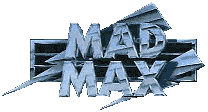|
Robert A. Crawford.
Copyright © 1998
All rights reserved.
Revised:
September 08, 2006
LESSON PLAN: COMPARATIVE
SYSTEMS ANALYSIS
I. Rationale:
MAD MAX?!?
OK, let's face it: Comparative Politics can be exceptionally tedious, particularly the dry
but absolutely essential area of structural analysis. The following exercise is an attempt
to "liven up" this section of the course by allowing the students to apply the
tools of analysis they have acquired in an entertaining and stimulating manner. In the
film Mad Max Beyond Thunderdome, Max is the Gulliver of a
post-apocalyptic world, journeying from place to place in search of Utopia. The places he
finds, "Bartertown" and "Crack-in-the-Earth", are complex and
visionary representations of two very different communities with startlingly different
cultural propensities and political systems. A setup which is perfect for analysis and
comparison--and with explosions as an added incentive to pay attention! Through quizzes,
discussion, and practice essays comparing the societies in Mad Max, students will be able
to quickly recognize ideological patterns and master the Easton model before moving on to
analyze the nations of the real world in preparation for the AP Exam.
II. Instructional Objectives:
Students will
- Classify political and economic activity into four major
categories: authoritarian socialist, authoritarian capitalist, democratic socialist, and
democratic capitalist.
- Describe and give examples of these types of political systems.
- Identify and Analyze the different economic and social goals of
different systems.
- Evaluate the decision-making process under these systems of
government.
- Compare and Contrast the types of institutions and their
importance in different political systems.
- Identify and Explain the comparative advantages and disadvantages
of each system.
- Demonstrate and Apply a comprehensive understanding of the Easton
model of comparative systems analysis.
- Understand the diversity of ideas and practices to be found in
human societies.
- Gain an awareness of prevailing world conditions and developments.
|
III. Materials and Equipment:
Handouts: Ideological Circle, Easton Model, Video Introduction,
Video Questionaire.
Videos: "Mad Max Beyond Thunderdome" (Warner Brothers) 1985.
IV. Instructional Procedures:
Time Required: Four to Five Class Periods.

RETURN TO TOP
Part One:
Bartertown
1. Lesson Initiating Activity - Ask students to get out
their handouts and notes relating to the Circle of Ideologies and the basic Easton Model.
2. Project a transparency of the Circle of Ideology. Ask students
to review and define the four models of ideological activity: authoritarian socialist,
authoritarian capitalist, democratic socialist, and democratic capitalist. Ask the class
to give examples of each: the United States and Japan (democratic capitalism), much of
Western Europe and Canada (democratic socialism); Nazi Germany, Iraq, and some Third World
nations (authoritarian capitalist); and the former Soviet Union, the People's Republic of
China, Cuba and Vietnam (authoritarian socialism).
3. Stress that there are no perfect examples of these systems.
Ideologies simply give us a handle on the basic propensities and goal orientation of a
given system. Ask students their impressions of the different political ideologies.
4. Project a transparency of the Easton Model of Comparative
Systems Analysis. Ask students to review and define the aspects of the Easton model
including the concepts of system, process, and policy functions.
5. Ask students to briefly apply the concepts of the Gate, the
State, and Feedback to the classroom, and then to the United States government.
6. Core Activity #1 - Distribute the Video
Introduction and part one of the Video Questionaire. Introduce the film and briefly go
over the questions and points of discussion in the Video Questionaire. Emphasize that the
film is for BOTH entertainment AND education.
7. Show Part One (Bartertown) of Mad
Max Beyond Thunderdome. The first stopping point is approximately 41 minutes
into the film: Pig Killer has sent the monkey into the desert to bring water to Max.

RETURN TO TOP
8. Lesson Initiating Activity - Ask students to get out
their Video Questionaire and notes relating to Bartertown.
9. Discuss the questions relating to Bartertown. What is the
dominant ideology and cultural propensities of Bartertown? What are its dominant political
and economic institutions? What is its political structure and how are the functions of
government carried out? Students should be prepared to discuss the questions on the
worksheet and should be able to back up their arguments with evidence from the film!! Here
are teacher's notes with evaluations and evidence to help
direct the discussion and evaluation of Bartertown.
10. Core Activity #2 - Show Part Two (Crack-in-the-Earth) of Mad Max Beyond Thunderdome.
The second stopping point is approximately 71 minutes into the film; where Max and the
refugees see the lights of Bartertown. If you do not give the students 10 minutes to
discuss the previous day (Bartertown) but begin the film immediately, then the best
stopping point is at approximately 81 minutes, where Max has destroyed Bartertown and
Auntie proclaims: “Find the little man. Bring him back to me; for those who took him,
no mercy.”

RETURN TO TOP
Part Three: Chase
and Conclusion
11. Lesson Initiating Activity - Ask students to get out
their Video Questionaire and notes relating to the Crack-in-the-Earth.
12. Discuss the questions relating to the Crack-in-the-Earth.
What is the dominant ideology and cultural propensities of the Crack-in-the-Earth? What
are its dominant political and economic institutions? What is its political structure and
how are the functions of government carried out? Students should be prepared to discuss
the questions on the worksheet and should be able to back up their arguments with evidence
from the film!! Here are teacher's notes with evaluations and
evidence to help direct the discussion and evaluation of the Crack-in-the-Earth.
13. Core Activity #3 - Show Part Three (Chase and
Conclusion) of Mad Max Beyond Thunderdome. To be honest, the final
section of the film is really totally unrelated to the study of comparative
government--but it's fun. Stuff blows up!
14. Closure Activity - After reacquainting themselves with
the handouts and highlighting or noting pertinent facts adn evidence from the film,
students should complete the worksheets they began at the start of the unit. This can be
done individually or as a class, and can be graded or discussed in a group session.
Students should be prepared to discuss the questions on the worksheets, identify the types
of regimes as well as the structures, institutions and functions of the Easton model and
how it relates to both Bartertown and the Crack-in-the-Earth, and they must be able to
back up their arguments with evidence from the film!

RETURN TO TOP
V. Assessment and Evaluation:
1. Class Participation - Assess the quality of student
participation in class discussion and concept achievement.
2. Essays - Give students a grade based on their effort and
ability to present, analyze, and compare the societies presented in the film in AP essay
form.
3. Objective Testing - matching, multiple choice, and alternative
response questions can be used to evaluate students' retention of the basic concepts,
facts, and vocabulary relating to this unit.

RETURN TO TOP
Robert A. Crawford.
Copyright © 1998
[Pine Crest School]
All rights reserved.
Revised: September 08, 2006.



